The Kanabō: The Japanese Weapon With A Rich History

The Kanabō, a Japanese weapon that isn't very well-known but powerful, is a legacy of old martial skill. It dates back to the 1400s and scares enemies with its weight and deadly power. Crafted to do a lot of damage, if not kill, this powerful weapon shows how creative Japanese fighting was at the time.
Modern people don't talk much about the Kanabō, but learning about it reveals a rich tapestry of martial practice and cultural heritage. This blog aims to illuminate the mysterious Kanabō by exploring its history, design, and role in Japanese martial arts and weapons.
If you look deeper into this interesting Kanabō weapon, you'll find an interesting story about power, strategy, and legacy.
Origin and History of Kanabō

The earliest written record of the Kanabō is from the 1300s. But because it was so simple, the weapon was possibly used as early as the Heian period, in the 8th century. Due to its popularity among samurai lords and other high-ranking officials in ancient Japan, the Kanabō weapon symbolized power and status.
Bandits and martial monks (sōhei), who were known for being brutal and skilled in battle, also used this piece of equipment. The Japanese forces had always been using heavy weapons in battle. This was because most battles were fought while riding a horse, where the extra weight of armor didn't matter much.
Because armor moves with the body, there were holes where the joints should have been, leaving the enemy open to attack. This made people come up with strategies like hitting the headpiece or the joints of the armor to go for the neck.
Not only was it too hard to cut through armor, but it was even more challenging to break through with a well-placed blow. There were still times when a Japanese spear called a yari could cut through steel.
The Nanboku-chō era saw the creation of the first armors that were lighter. But it was still hard to break through the light armor. This made people make tools like the "Kanabō " that were meant to hit. The weapon worked well because the arms and legs were often weak spots in Japanese armor.
Construction and Design of the Kanabō Weapon
Combination of Wood and Iron
The typical materials used to build the Kanabō were iron and wood. A large iron or steel clubhead rested atop a handle composed of a robust hardwood like oak. This clubhead frequently had many iron studs or spikes on it, which enhanced the weapon's destructive power.
Constructed in Various Sizes and Weights
The Kanabō came in different sizes and weights based on who used it and what they wanted to do with it. A normal Kanabō was about 4 to 6 feet long and weighed 10 to 20 pounds, but bigger and heavier ones were known to exist. Some Kanabō were so big that you had to be very strong and skilled to use them properly.
Design and Craftsmanship
The uniqueness of each Kanabō came from the skill of its maker and the user's tastes. The weapon's design often had a lot of small drawings and carvings that showed traditional Japanese patterns or scenes from mythology and folklore. The Kanabō's attention to detail shows how important it is in Japanese martial arts society.
Kanabō in Popular Culture and Modern World
The Kanabō, a traditional Japanese weapon, has become a universal symbol in modern culture, surpassing its historical roots. The Kanabō, originally used by samurais in feudal Japan, symbolizes strength, power, and fighting ability.
Its unique spiked appearance and symbolic meaning for warriors have made it a compelling feature in various types of media, including video games, manga, and anime. The Kanabō is a popular subject in modern culture, frequently appearing in fresh versions and interpretations that attract audiences.
Popular media's portrayal of it not only acknowledges its historical significance but also maintains its legendary air, solidifying its reputation as a legendary weapon. Furthermore, the Kanabō has an impact that goes beyond amusement; it has influenced the creation of modern weapons and sporting goods, as well as appearing in current art.
Bridging the gap between tradition and contemporary, the Kanabō continues to be a timeless icon that connects with audiences worldwide as a sign of strength and resilience.
Top 4 Alternatives of Kanabō Weapon
Nyoibo
Often called as "Ruyi Jingu Bang," this is a lengthier variation of Kanabō that is occasionally studded and frequently constructed of hardwood. It is Goku's weapon in Dragon Ball and the weapon of the immortal monkey Sun Wukong.
Konsaibo
The Konsaibo differs significantly from the Kanabō in every way. The iron studs imparted a robust and long-lasting sheen to the wood. However, it was still too heavy to be helpful in an actual fight.
Ararebo
A warrior could wield this shorter Kanabō more easily with one hand. Using the Ararebo was easier. Soldiers preferred the longer variants, even though this type allowed for more flexible, unrestricted blows. This was because they required greater mass and force for the most significant possible effect.
Kanemuchi
There were no spikes or pins on this weapon. It was like the Kanabō but longer and tapered. It was a popular weapon in Japan in the Middle Ages. It is known that some Kanemuchi got as long as 39 inches (99 cm).
The Bottom Line

In summary, the Kanabō is an interesting and powerful weapon with a long past that goes back hundreds of years. Because it comes from old Japan, has ties to samurai, and is important in Japanese folklore, it is an integral part of Japanese martial culture.
The weapon's unique shape, fighting styles, and cultural importance have had a lasting effect on modern martial arts and pop culture. We are still learning about traditional weapons, and the Kanabō is a potent reminder of how important it is to keep and honor our martial history.

